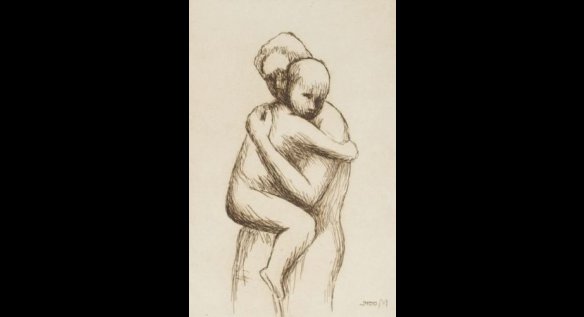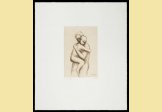Mother And Child Xxx
| Artist | : | Henry Moore |
| Medium | : | Other - Etching |
| Size unframed | : | 6.25"/9.6" |
| Size framed | : | N/A |
| Signature Info | : | Hand Signed - By artist |
| Frame Info | : | Yes |
| Condition | : | Very Good |
| Year | : | Unknown |
Description
Rare, limited edition Etching by Henry Moore, 36/65 in good condition.
- Mother and Child XXX,
- Etching,
- Signed lower right in pencil and numbered 36/65 lower left.
- Dimensions: h: 9 1/2 x w: 6 1/4 in.
Henry Moore was born on 30 July, 1898, in Castleford, Yorkshire. He was the seventh child in a family of 8 children. His father worked in a colliery in Castleford but wanted his children to avoid working down the mines, so as much as possible given the family's poverty, the children were educated at a local school.
Henry mooreIt was in his teenage years that he developed an interest and talent in art. This helped him to get a scholarship to Castleford Secondary school. Aged 18 he was called up to the army and in 1917 was injured during a gas attack at the Battle of Cambrai. After his injury, he spent the remainder of the war behind the line training new recruits. Moore later said the war was for him not a traumatic experience - unlike that of many of his contemporaries.
After the war, he continued his education and in 1921 won a scholarship to study at the Royal College of Art. Henry Moore was a talented student, but already he was experimenting with new styles and this often conflicted with his teachers who were trying to teach the classic style - of perfection in form and composition. Moore was attracted to a more spontaneous art form with imperfections evident in the sculpting. In 1924, he spent time travelling in Italy and later Paris. Here he could view the great Masters such as Michelangelo and Giovanni Pisano. But, Moore was also influenced by his studies of primitive art, and at the Louvre he was particularly influenced by the Toltec-Maya sculptural form, the Chac Mool.
On his return to London, he took up a teaching post at the Royal College of art. This part time post enabled him to work on his own art, leading to his first commissions such as the West Wind - 1928-29.
In the 1930s, Moore became an active member of the informal modern art movement, centred around the ideas and innovation of people like Pablo Picasso and Jean Arp. He also briefly flirted with the surrealist movement.
The Second World War led to more traditional commissions and Moore worked as a war artist producing memorable pictures such as images of civilians fleeing the Blitz in the London underground.
This helped Moore's reputation and after the war led to numerous awards and opportunities in America. In 1948 he was awarded the International Sculpture Prize at the Venice Biennale. Significant commissions included
A reclining figure for UNESCO building in Paris 1956
A Nuclear energy sculpture at the University of Chicago. (to commemorate 25th anniversary of nuclear reaction)
Knife Edge – Two Piece in 1962 for College Green, London around Houses of parliament.
In 1972, Henry Moore established his Henry Moore Foundation - a charitable trust to promote art education and the support of young artists. He was a man of modest means. Despite his wealth and fame he lived frugally remembering his Yorkshire roots. He even turned down a knighthood in 1951 because he didn't want to be seen as an establishment figure. Yet, during his lifetime he did become the dominant sculpture of his generation.



